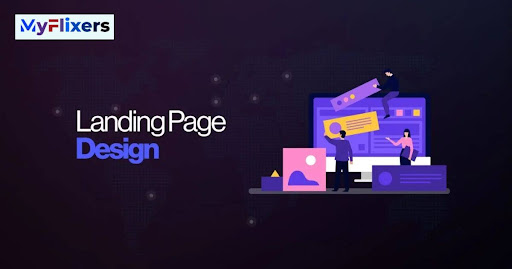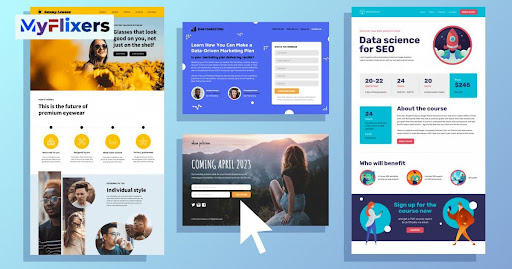In today’s fast-paced digital landscape, turning website visitors into loyal customers is the holy grail of online marketing. If you want to supercharge your conversion rates and skyrocket your business growth, an AFG landing page might be your secret weapon. This comprehensive guide will walk you through everything you need to know about crafting high-converting AFG landing pages that’ll leave your competition in the dust.
Understanding AFG Landing Pages

What exactly is an AFG landing page?
An AFG (Affiliate Funnel Group) landing page is a specialized web page designed with one primary goal: to convert visitors into leads or customers. Unlike traditional landing pages, AFG landing pages are laser-focused on driving conversions within a specific marketing funnel. They’re the turbochargers of the digital marketing world, engineered to maximize user engagement and achieve your marketing goals precisely.
These pages remove unnecessary distractions, guiding visitors toward a clear call to action (CTA). By doing so, they create a streamlined user experience primed for conversion. Whether you want to generate leads, sell products, or build your email list, a well-crafted AFG landing page can be your ticket to success.
The psychology behind AFG landing pages
The effectiveness of AFG landing pages isn’t just about flashy design or clever copywriting – it’s rooted in profound psychological principles. These pages tap into the science of persuasion, using a combination of visual cues, social proof, and urgency to guide visitors toward taking action.
One critical psychological principle at play is the concept of cognitive ease. By presenting information in a clear, digestible format, AFG landing pages reduce the mental effort required for visitors to decide. This increased cognitive fluency makes visitors more likely to view your offer favorably and take the desired action.
Another powerful psychological tool used in AFG landing pages is the principle of reciprocity. By offering valuable content or a free resource upfront, you create a sense of obligation in the visitor. This makes them more likely to reciprocate by signing up for your offer or purchasing.
AFG landing pages vs. other types of landing pages
While all landing pages aim to convert visitors, AFG landing pages stand out in their laser focus and optimization for specific marketing funnels. Let’s compare them to other types of landing pages:
Type of Landing Page Primary Focus Key Features Best Used For
AFG Landing Page Conversion within a specific funnel Highly targeted, minimal distractions, strong CTA Affiliate marketing, product launches, lead generation
Squeeze Page Email list building Brief content, prominent opt-in form Growing email subscribers
Click-Through Landing Page Warming up visitors for the sales page Detailed product info, “Learn More” CTA Complex products or services
Long-Form Sales Page In-depth persuasion Extensive copy, multiple CTAs, testimonials High-ticket items or services
Thank You Page Confirmation and upselling Order confirmation, additional offers Post-conversion engagement
As you can see, AFG landing pages shine when driving targeted conversions within a specific marketing funnel. Their focused approach and optimization for user engagement make them particularly effective for affiliate marketing, product launches, and lead generation campaigns.
Critical Elements of a High-Converting AFG Landing Page

Crafting an irresistible headline
Your headline is the first thing visitors see, and it can make or break your conversion rates. A powerful headline for an AFG landing page should:
- Clearly communicate the value proposition
- Address the visitor’s pain points
- Create curiosity or excitement
- Be concise and easy to understand
Designing eye-catching visuals that convert
In the world of AFG landing pages, a picture isn’t just worth a thousand words – it could be worth thousands of dollars in conversions. Your visual content should:
- Reinforce your message and value proposition
- Show your product or service in action
- Evoke positive emotions related to your offer
- Be high-quality and professional
Consider using a mix of images, videos, and infographics to keep your page visually interesting. For instance, you might include a hero image showcasing happy customers using your product, followed by an explainer video that breaks down your offer and infographics highlighting key benefits or statistics.
Nailing your call-to-action (CTA)
Your CTA is where the rubber meets the road in terms of conversion. To create a CTA that visitors can’t resist:
- Use action-oriented, specific language (e.g., “Get My Free Trial” instead of “Submit”)
- Make it visually stand out with contrasting colors and ample white space
- Create a sense of urgency (e.g., “Claim Your Spot – Only 50 Left!”)
- Ensure it’s prominently placed and easy to find
Your CTA should be the most clickable element on your page. Don’t be afraid to use it multiple times, especially on longer landing pages.
Building trust with social proof
In the digital world, trust is currency. Incorporate social proof to build credibility and show visitors that others have benefited from your offer. Types of social proof to include:
- Customer testimonials (video testimonials are compelling)
- Case studies showcasing accurate results
- Trust badges from reputable organizations
- Media mentions or awards
- Number of customers or users (e.g., “Trusted by over 10,000 businesses”)
When showcasing social proof, be specific and authentic. Real names, photos, and detailed accounts of how your product or service helped are more convincing than vague, anonymous praise.
Optimizing your lead capture form
Your lead capture form is the gateway to conversion. To optimize it:
- Keep it short – ask only for essential information
- Use a multi-step form for complex offers to reduce perceived effort
- Implement brilliant forms that adapt based on user behavior
- Provide clear value propositions for each field (e.g., “Enter your email to get instant access”)
- Use inline validation to catch errors in real-time
Remember, every additional field in your form can decrease conversion rates, so cut unnecessary questions ruthlessly.
Best Practices for Designing an AFG Landing Page

Could you keep it simple and stupid (KISS principle)?
When it comes to AFG landing pages, less is often more. A cluttered, complicated page can overwhelm visitors and tank your conversion rates. To keep things simple:
- Focus on a single, clear message
- Remove unnecessary navigation links
- Use plenty of white space to improve readability
- Break content into easily digestible chunks
- Stick to a clean, consistent design theme
Your AFG landing page differs from the place to showcase every product or service feature. Zero in on the most compelling benefits and make them impossible to miss.
Create a sense of urgency.
Urgency is a powerful motivator in human psychology. By creating a sense that time is running out or that supplies are limited, you can nudge visitors towards taking action now rather than later. Some effective urgency tactics include:
- Countdown timers for limited-time offers
- Showing the number of spots or products left
- Using “Don’t miss out” or “Last chance.”
- Offering bonuses for quick action
For example, you might include a prominently displayed countdown timer with the message: “Early Bird Pricing Ends in: [Timer] – Save 50% When You Act Now!”
Personalize the user experience.
Personalization can dramatically boost the effectiveness of your AFG landing page. By tailoring the content to the individual visitor, you create a more relevant and engaging experience. Some personalization techniques to consider:
- Dynamic content based on referral source or past behavior
- Geolocation-based offers or examples
- Personalized greetings using data from your CRM
- Adaptive content that changes based on user interactions
For instance, if a visitor arrives from a Facebook ad about social media marketing, your landing page could dynamically adjust to highlight social media-specific benefits and testimonials.
Mobile optimization: A must-have for AFG success
With more than half of web traffic coming from mobile devices, optimizing your AFG landing page for mobile isn’t just nice to have – it’s essential. Critical considerations for mobile optimization include:
- Responsive design that adapts to different screen sizes
- Large, easily tappable buttons and form fields
- Fast loading times (aim for under 3 seconds)
- Simplified content that’s easy to read on small screens
- Click-to-call functionality for phone numbers
Test your page on various devices and screen sizes to ensure a smooth experience for all visitors.
SEO and AFG Landing Pages: Why It Matters
While the primary goal of an AFG landing page is conversion, neglecting SEO can mean missing out on valuable organic traffic. Here’s how to balance SEO optimization with conversion optimization:
Keyword optimization for AFG landing pages
- Conduct thorough keyword research to identify relevant, high-intent phrases
- Incorporate your target keyword naturally in the headline, subheadings, and body copy
- Use related keywords and synonyms to broaden your semantic relevance
- Optimize meta titles and descriptions for click-through rates
Remember, while keyword optimization is essential, never sacrifice the clarity of your message or the user experience to cram in keywords.
Technical SEO considerations
- Ensure fast page load times by optimizing images and minimizing code
- Implement schema markup to help search engines understand your content
- Use descriptive, keyword-rich URLs
- Ensure your page is mobile-friendly and passes Google’s mobile-friendly test
Creating SEO-friendly content that converts
- Write compelling meta descriptions that entice clicks from search results
- Structure your content with clear headings (H1, H2, H3) that include relevant keywords
- Use internal linking to guide visitors to related content or offers
- Include alt text for images to improve accessibility and SEO
By balancing SEO best practices with conversion optimization, you can create an AFG landing page that converts well and attracts organic traffic over time.
Optimizing Conversion Rates for AFG Landing Pages

Creating a high-converting AFG landing page is an ongoing process of testing and refinement. Here are some key strategies to continually improve your conversion rates:
The power of A/B testing
A/B testing, or split testing, involves creating two versions of your landing page with a single element changed and then comparing their performance. Some elements to consider testing include:
- Headlines and subheadings
- CTA button color, text, and placement
- Images and videos
- Form length and fields
- Page layout and design
When conducting A/B tests:
- Test one element at a time for clear results
- Run tests for a statistically significant period
- Use tools like Google Optimize or Optimizely for accurate tracking
- Always have a clear hypothesis for each test
Heatmaps and user behavior analysis
Heatmaps provide valuable insights into how visitors interact with your AFG landing page. They can show you:
- Where visitors click most frequently
- How far down the page they scroll
- Which elements attract the most attention
Use tools like Hotjar or Crazy Egg to generate heatmaps and analyze user behavior. This data can inform design decisions, such as:
- Repositioning critical elements for better visibility
- Removing or redesigning elements that aren’t getting attention
- Adjusting the length and structure of your content
Implementing exit-intent popups
Exit-intent popups can be a powerful last-ditch effort to convert visitors who are about to leave your page. To use them effectively:
- Offer something of value (e.g., a particular discount or exclusive content)
- Keep the message brief and the design simple
- Make it easy to close the popup
- Use persuasive copy that addresses potential objections
For example, you might use an exit-intent popup that says: “Wait! Don’t miss out on your exclusive 20% discount. Enter your email to claim it now!”
By continuously optimizing your AFG landing page based on data and user behavior, you can steadily improve your conversion rates and maximize the return on your marketing efforts.
Common Mistakes to Avoid in AFG Landing Pages
Even the most well-intentioned marketers can fall into traps that hurt their AFG landing page performance. Here are some common pitfalls to watch out for:
Information overload: Less is more
One of the biggest things that could be improved in AFG landing page design is trying to cram too much information onto the page. This can overwhelm visitors and actually decrease conversions. Signs you might be guilty of information overload include:
- Long, unbroken paragraphs of text
- Multiple competing offers or CTAs
- Too many images or visual elements
- Complicated jargon or technical language
To streamline your content:
- Focus on your unique value proposition
- Use bullet points to highlight key benefits
- Break up text with subheadings and white space
- Use visuals to convey complex information
Remember, the goal is to provide enough information to persuade visitors to take the desired action – not to tell them everything about your product or service.
Weak or confusing CTAs
Your call to action is the linchpin of your AFG landing page. Weak or confusing CTAs can derail even the most persuasive content. Common CTA mistakes include:
- Vague or generic language (e.g., “Click Here” or “Submit”)
- Too many options or competing CTAs
- Poor placement or lack of visibility
- Misalignment with the offer or visitor expectations
To create solid and compelling CTAs:
- Use action-oriented, specific language (e.g., “Start My Free Trial”)
- Ensure visual prominence with contrasting colors and ample white space
- Align the CTA text with the offer and visitor’s stage in the funnel
- Test different variations to find what resonates best with your audience
Neglecting mobile users
With mobile traffic continuing to grow, failing to optimize for mobile devices is a costly mistake. Common mobile optimization oversights include:
- Non-responsive design that doesn’t adapt to different screen sizes
- Tiny, hard-to-tap buttons or form fields
- Slow loading times on mobile networks
- Content that requires horizontal scrolling
To improve mobile optimization:
- Use a responsive design framework
- Test your page on various devices and screen sizes
- Optimize images and minimize code for faster loading
- Use larger, finger-friendly buttons and form fields
- Prioritize the most critical content for mobile viewers
Failing to build trust
In the digital world, trust is essential for conversions. Failing to incorporate trust-building elements can leave visitors hesitant to take action. To build trust effectively:
- Include customer testimonials and case studies
- Display trust badges, certifications, or security seals
- Provide clear contact information and a physical address if applicable
- Offer a strong guarantee or return policy
- Use professional, high-quality design and imagery
Remember, every element of your AFG landing page should work towards building credibility and trust with your visitors.
Frequently Asked Questions (FAQs)
What’s the ideal length for an AFG landing page?
There’s no one-size-fits-all answer, but generally, your page should be long enough to provide all necessary information and overcome objections but short enough to maintain engagement. A shorter page (300-500 words) suffices for simple offers, while complex or high-ticket items require longer pages (1000+ words).
How often should I update my AFG landing page?
Regular updates are crucial for maintaining performance. Aim to review and update your page quarterly or more frequently if you’re running ongoing A/B tests or your offer changes.
Can I use the same AFG landing page for multiple campaigns?
While it’s possible, it’s generally more effective to create targeted landing pages for each campaign. This allows you to tailor the messaging and design to specific audience segments and traffic sources.
What’s the best way to track AFG landing page performance?
Use a combination of tools like Google Analytics, heatmap software, and your marketing automation platform. Key metrics to track include conversion rate, bounce rate, time on page, and traffic source.
How do I choose the right images for my AFG landing page?
Select images that reinforce your message and evoke positive emotions about your offer. Use high-quality, authentic images that showcase your product or service in action. Avoid generic stock photos that don’t add value to your content.
Conclusion
Creating a high-converting AFG landing page is both an art and a science. By focusing on clear messaging, compelling design, and continuous optimization, you can create landing pages that attract visitors and convert them into loyal customers.
The key to success lies in understanding your audience, clearly communicating your value proposition, and constantly testing and refining your approach. With the strategies and best practices outlined in this guide, you’re well-equipped to create AFG landing pages that drive results and boost your digital marketing success.

